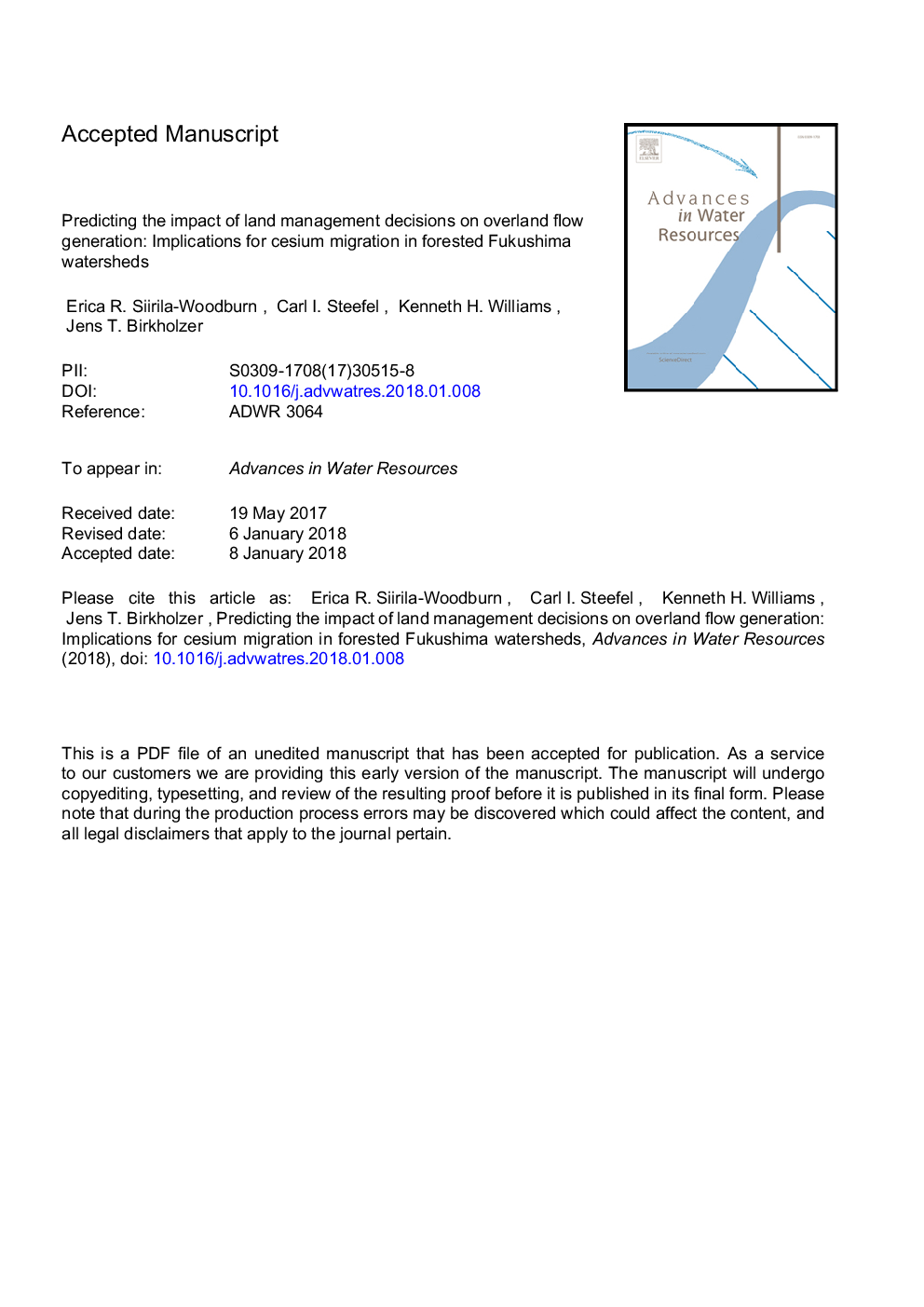| Article ID | Journal | Published Year | Pages | File Type |
|---|---|---|---|---|
| 8883347 | Advances in Water Resources | 2018 | 49 Pages |
Abstract
The effects of land use and land cover (LULC) change on environmental systems across the land surface's “critical zone” are highly uncertain, often making prediction and risk management decision difficult. In a series of numerical experiments with an integrated hydrologic model, overland flow generation is quantified for both present day and forest thinning scenarios. A typhoon storm event in a watershed near the Fukushima Dai-ichi Nuclear Power Plant is used as an example application in which the interplay between LULC change and overland flow generation is important given that sediment-bound radionuclides may cause secondary contamination via surface water transport. Results illustrate the nonlinearity of the integrated system spanning from the deep groundwater to the atmosphere, and provide quantitative tools when determining the tradeoffs of different risk-mitigation strategies.
Keywords
Related Topics
Physical Sciences and Engineering
Earth and Planetary Sciences
Earth-Surface Processes
Authors
Erica R. Siirila-Woodburn, Carl I. Steefel, Kenneth H. Williams, Jens T. Birkholzer,
